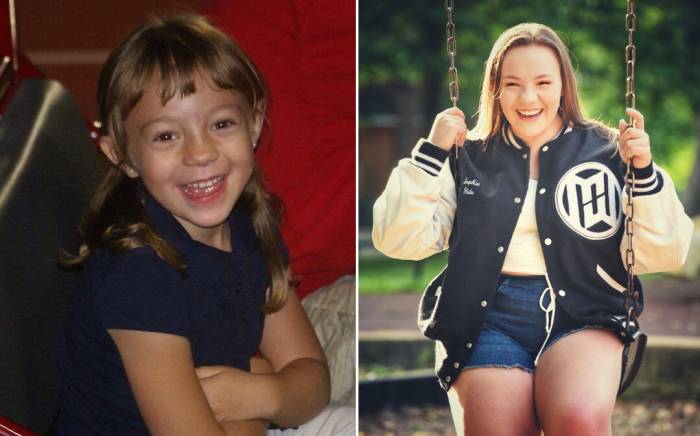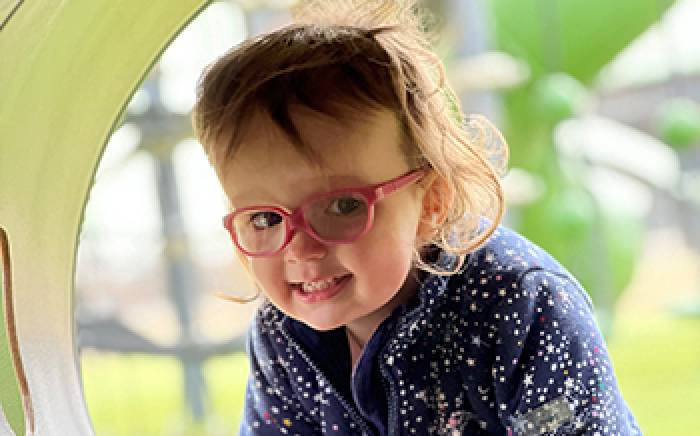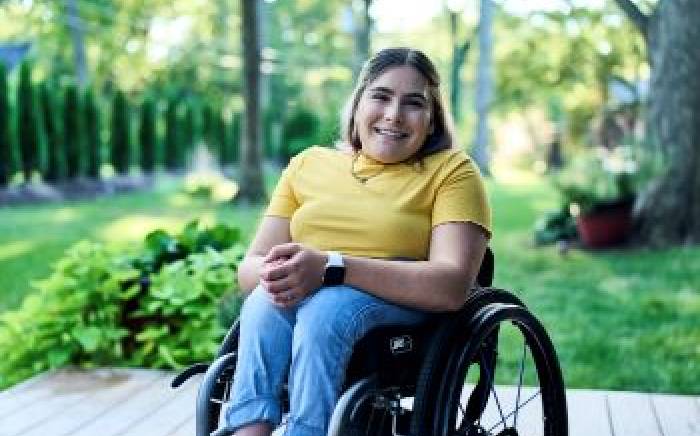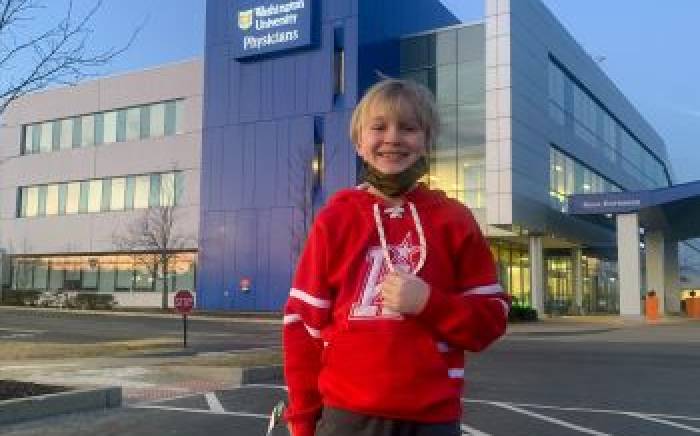 When Jakrii Pearson was almost 3, he began having seizures. Washington University neurologists at St. Louis Children’s Hospital discovered he had a benign (noncancerous) tumor located in the middle part of his occipital and parietal lobes, close to the area of the brain responsible for vision. Rather than performing what could be a risky surgery, a wait-and-see approach was taken. Jakrii was prescribed medications to prevent seizures, underwent semi-annual MRIs, and had routine follow-up visits with neurologist Robin Ryther, MD, and neurosurgeon Matthew Smyth, MD.
When Jakrii Pearson was almost 3, he began having seizures. Washington University neurologists at St. Louis Children’s Hospital discovered he had a benign (noncancerous) tumor located in the middle part of his occipital and parietal lobes, close to the area of the brain responsible for vision. Rather than performing what could be a risky surgery, a wait-and-see approach was taken. Jakrii was prescribed medications to prevent seizures, underwent semi-annual MRIs, and had routine follow-up visits with neurologist Robin Ryther, MD, and neurosurgeon Matthew Smyth, MD.
Then at age 7, Jakrii’s condition changed.
“I had just moved to Texas for a new job—the family was going to follow once the school year ended—when Jakrii began having seizures,” says his dad, John Pearson. “Dr. Ryther adjusted his medication, but it just wasn’t working anymore.”
Jakrii began having multiple seizures daily—at least one or two, on one especially bad day seven.
“The seizures ruined his days because they wore him out. He’d have to take a two-hour nap afterward. It was becoming a daily thing where the school would call to say Jakrii had a seizure, and then his mom, Wansita, would bring him home,” says John. “I’d estimate two to three days a week he missed school completely or had to leave early.”
An MRI showed that Jakrii’s tumor exhibited some signs of changing. At that point, Dr. Smyth proposed treating the tumor with two new technologies: the ROSA™ robotic surgical assistant and laser ablation surgery. ROSA serves as both a surgical assistant and GPS for the brain during stereotactic electroencephalograms. Laser ablation uses an MRI-guided, high-intensity laser probe to produce heat and permanently ablate brain tissue causing seizures.
“Both of these new technologies have the potential for significantly changing how we identify and treat areas of the brain in which seizures occur,” he says.
Jakrii’s case was reviewed by the hospital’s Pediatric Epilepsy Board, which brings together the expertise of epileptologists, neurosurgeons, neuropsychologists and epilepsy nurses to ensure each patient receives multiple, ongoing second opinions during the course of their care. The Board’s opinion: Jakrii was an excellent candidate for laser ablation.
Just two small incisions in Jakrii’s skull were needed for Dr. Smyth to reach the tumor with a probe and then heat the tip with laser energy to destroy most of the tumor. Four days later, Jakrii was released from the hospital.
Dr. Smyth estimates he destroyed about 80 percent of the tumor; it is a type that is unlikely to grow again.
Now fully recovered, Jakrii hasn’t had a seizure since the day of his surgery. He still takes seizure medicine and will continue to until he’s been seizure-free a minimum of two years.
“Dr. Smyth is a solid, straightforward person, someone you can depend on,” says John. “He changed not only Jakrii’s life, but the whole family’s. We almost forget what it was like back when he was having seizures everyday.”
Now 8, it was the best birthday present Jakrii could have hoped for.










